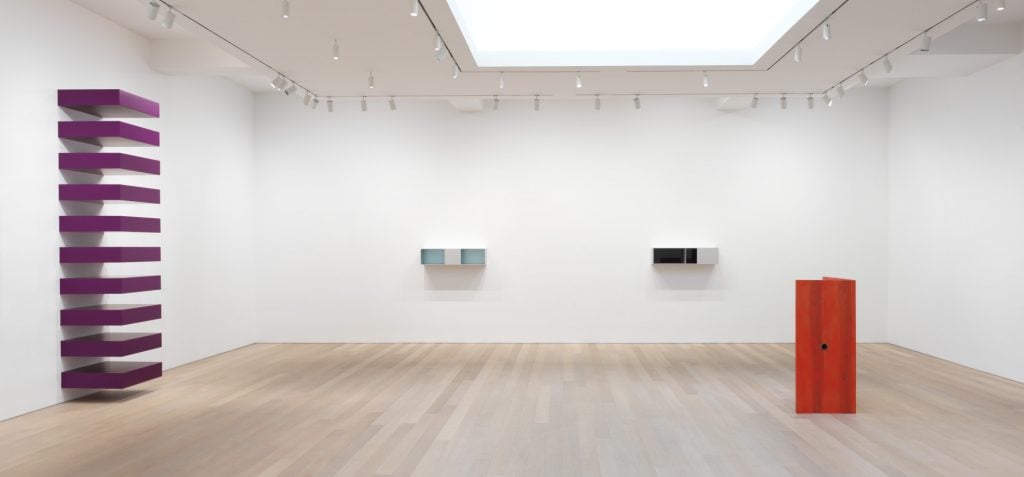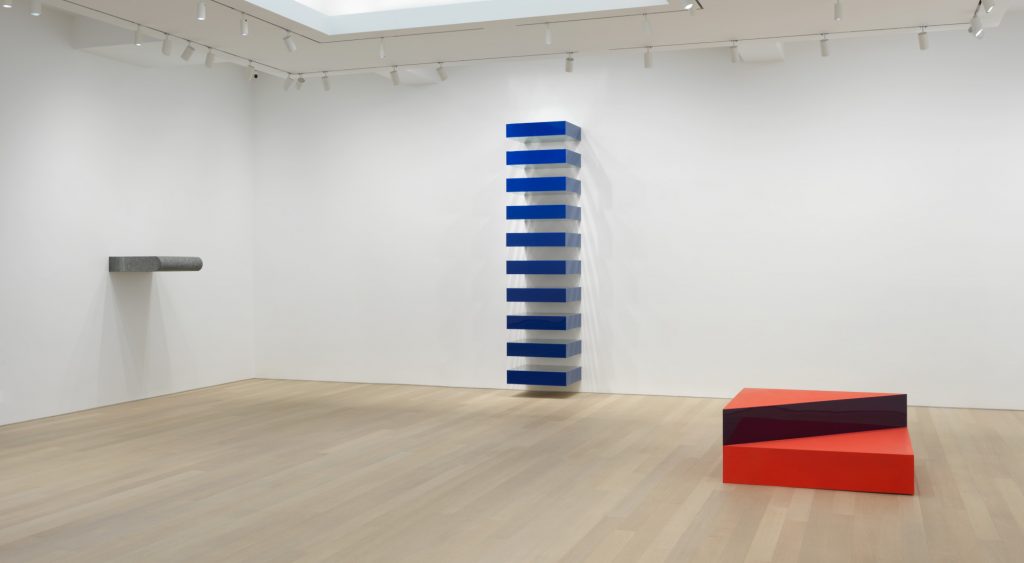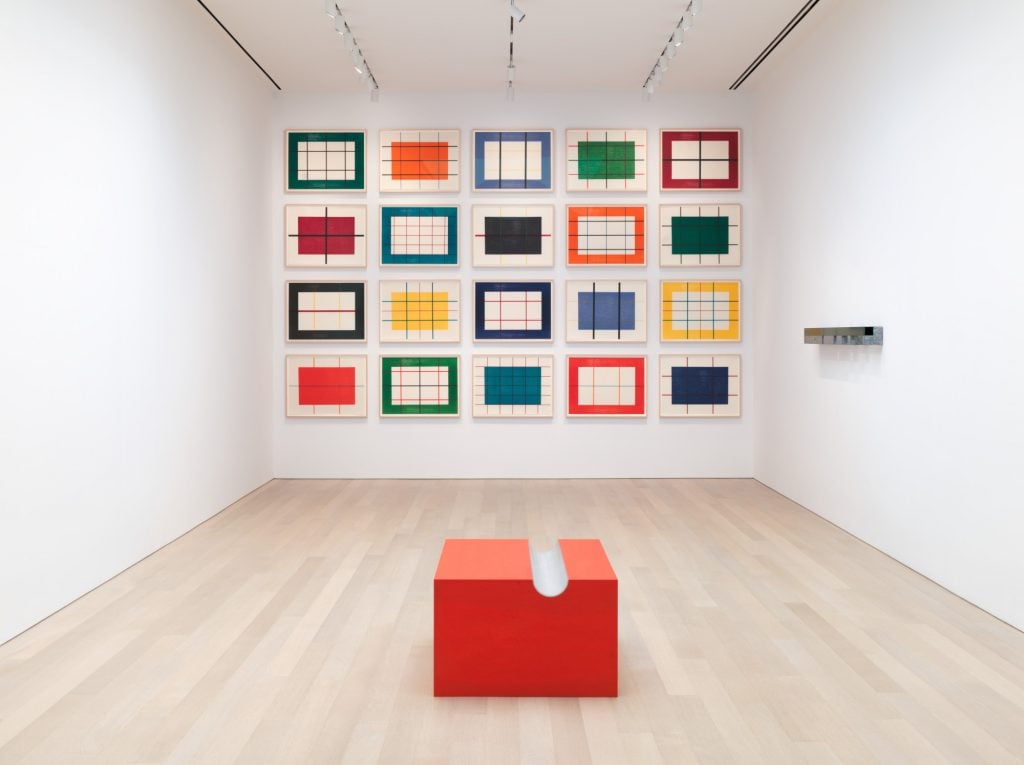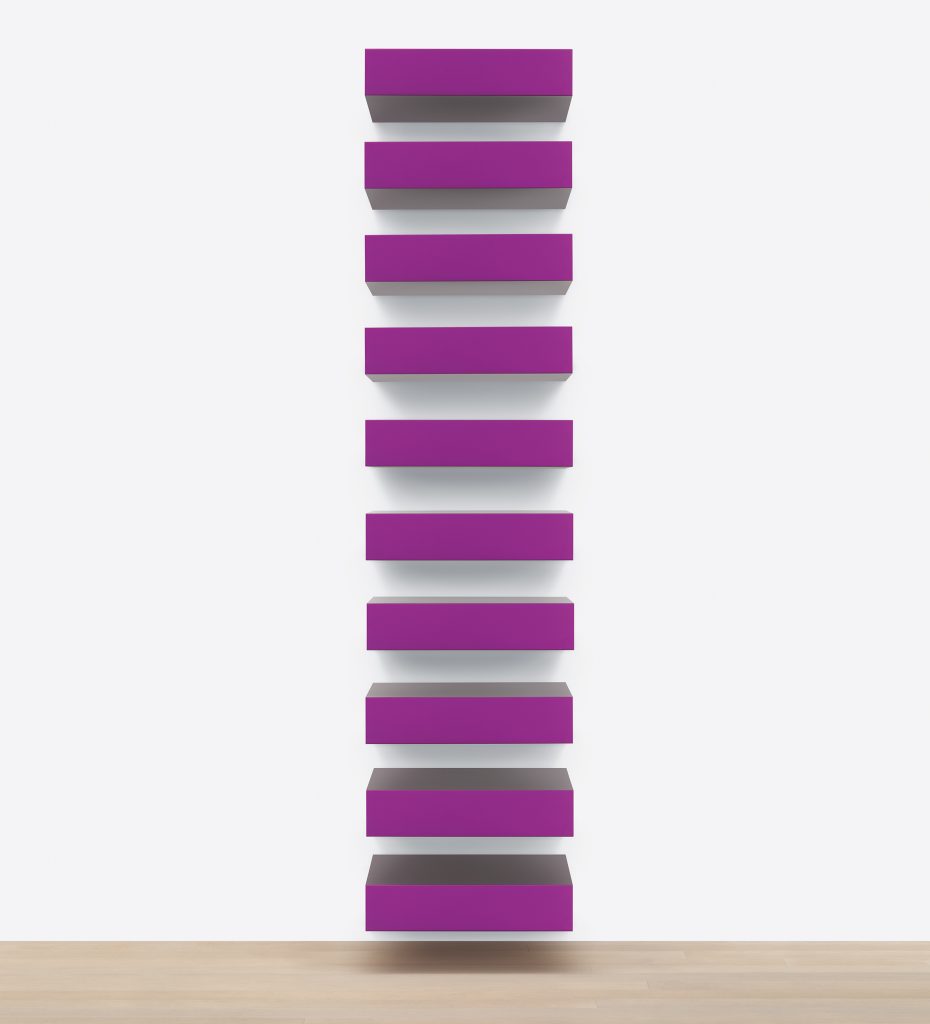On view until July 14, 2023, Gagosian presents a personal exhibition of works by Donald Judd at their downtown Madison Avenue space. Comprising 15 works dating from 1965 to 1991, the exhibition encompasses a number of materials Judd has worked with, such as painted aluminum, plexiglass and plywood. While the individual logic and composition of each work is largely self-referential, together these works have a remarkable effect on the gallery space.
Judd is widely regarded as one of the most influential artists of the 20th century and this monographic exhibition of his works, ranging from plywood and aluminum floor pieces to galvanized iron wall hangings, offers a chance to better understand Judd’s vision. the founding artist. New juxtapositions and arrangements of works from different periods and series of careers create an opportunity to engage and perceive the works in new and sometimes surprising ways.
A highlight of the exhibition is a series of 20 woodcuts, one of the largest series of prints Judd has ever undertaken. They were born out of an invitation from the Inkong Gallery in Seoul to create prints using local “hanji” paper, on which the original proofs were printed in partnership with master printer Robert Arber. The series was unfinished at the time of Judd’s death, but was recently completed in 2020 Arber in partnership with the Judd Foundation.
To mark the exhibition, we spoke with Judd Foundation Artistic Director Flavin Judd, the artist’s son who has been at the forefront of preserving and promoting Judd’s legacy, to learn more about the creation of the exhibition.

Installation view of “Donald Judd” (2023) at Gagosian, 980 Madison Avenue, New York. Photo: Rob McKeever. © Judd Foundation/Artists Rights Society (ARS), New York. Courtesy of Gagosian.
The current exhibition is Judd’s fourth solo with Gagosian and features a wider range of dated works – from 1965 to 1991 – than previous exhibitions at the gallery. Was there a specific direction or motivation behind the selection of works that are included?
THE the works are not selected on the basis of a concept or a theory. Each exhibition is on what works together in a given space and what might not have been seen recently together. The space informs about the installation of the works.
As Artistic Director of the Judd Foundation and of course the artist’s son, you have the best insight into Judd’s creative vision. What are some of the things you consider or think about in the process of helping to put on an exhibition of his work?
It’s about space and work, there are no historical references or quotes. I Ait does not interest me type of historic miningdon’t either. It is really about experience and research.

Installation view of “Donald Judd” (2023) at Gagosian, 980 Madison Avenue, New York. Photo: Rob McKeever. © Judd Foundation/Artists Rights Society (ARS), New York. Courtesy of Gagosian.
Viewers often associate Judd’s work with the raw material, namely concrete or machined aluminum, famous in ChinatiFoundation. In this exhibition, however, the emphasis is on color. Can you talk about Judd’s relationship with color in his practice?
His work, to him, was all about color. In early metalwork he had rules he stuck to (one color and one metal or two different materials of two colors)but that limited him. He invented painted aluminum structures to play more with color. In these works, you see how the colors work together and a wider color spectrum. He obviously felt that all materials had colors, but that doesn’t mean you just want to work with shades of gray all the time.
The color spectrum is wide and interesting, and Don was interested in things that exist – color exists. That they exist even for each of us is another question. Maybe a viewer the show can answer that. Her prints also functioned as color experiments. The main point, however, is any color.

Installation view of “Donald Judd” (2023) at Gagosian, 980 Madison Avenue, New York. Photo: Rob McKeever. © Judd Foundation/Artists Rights Society (ARS), New York. Courtesy of Gagosian.
Can you talk about the twenty woodcuts on display and the involvement of the Judd Foundation in their production?
For this set, Don had specified the use of a traditional Korean paper made for over a thousand years. HeThe fibers are really rough and the paper has a mottled texture. Unfortunately, that means it’s terrible as paper for making prints. While we had the original proofs and printswe have had to have custom paper that combines the properties of the original paper to complete the set. It took time, but so did everything we do.
Are there any key insights or impressions that you envision or hope show visitors will take away from this specific exhibit?
I just hope they see the individual pieces and maybe feel how they work together. I want them to feel the works and not be told a theory about what East. The impressions that emerge depend on the visitor and it is important to leave this open.

Donald Judd, untitled (1988). Photo: Rob McKeever. © Judd Foundation/Artists Rights Society (ARS), New York. Courtesy of Gagosian.
Do you have a favorite work in the series? Or are you always drawn to a working format, like floor pieces or wall pieces?
I’ve never seen the purple stack before so this was fabulous. Also, the engravings at the end of the wall, I think it worked very well.
“Donald Juddis on view at Gagosian, 980 Madison Ave, New York, through July 14, 2023.
Follow Artnet News on Facebook:
Want to stay one step ahead of the art world? Subscribe to our newsletter to receive breaking news, revealing interviews and incisive reviews that move the conversation forward.
